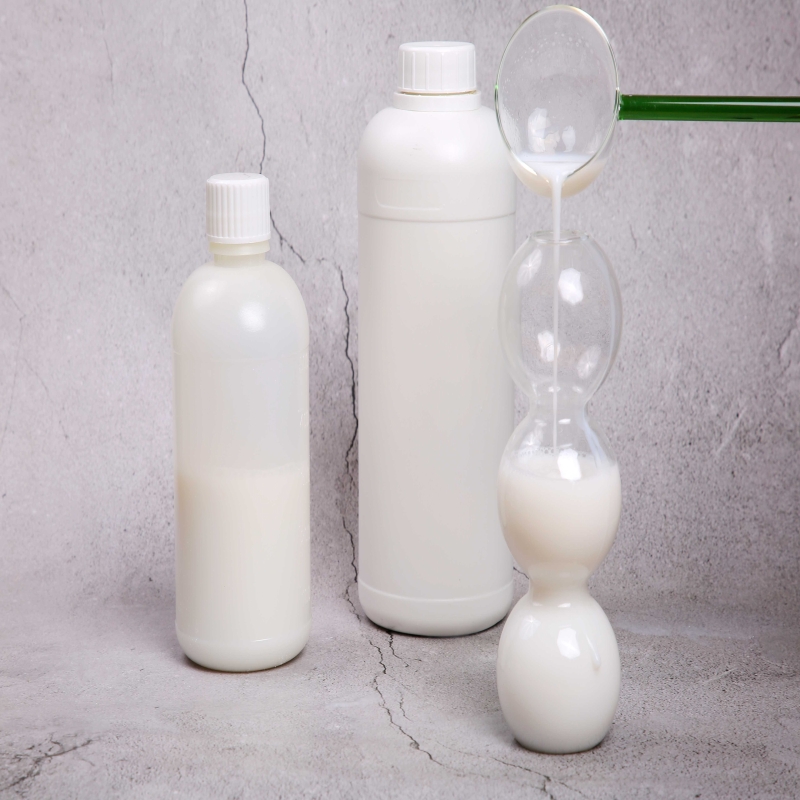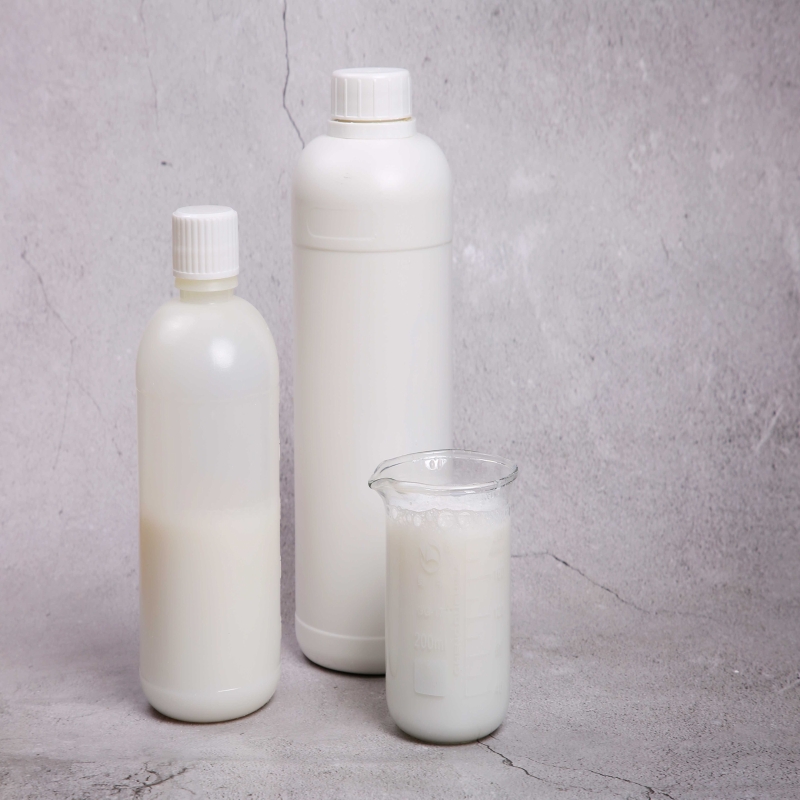-
Categories
-
Pharmaceutical Intermediates
-
Active Pharmaceutical Ingredients
-
Food Additives
- Industrial Coatings
- Agrochemicals
- Dyes and Pigments
- Surfactant
- Flavors and Fragrances
- Chemical Reagents
- Catalyst and Auxiliary
- Natural Products
- Inorganic Chemistry
-
Organic Chemistry
-
Biochemical Engineering
- Analytical Chemistry
-
Cosmetic Ingredient
- Water Treatment Chemical
-
Pharmaceutical Intermediates
Promotion
ECHEMI Mall
Wholesale
Weekly Price
Exhibition
News
-
Trade Service
The role of oligomers in UV coatings
Oligomer: The oligomer used in light-curing coatings, also known as prepolymers
Characteristics of the UV curing reaction
UV curing is an in-line coatingol.
Polymerization mechanism
Free radical polymerization has: rapid response; Larger contractions; Small change in polymerization; The effect of polymerization is relatively large (0.
--The most unfavorable to the paint is shrinkage, according to foreign W.
The complexity of UV coating formulations
1.
2.
An introduction to resins commonly used in UV coatings by function
Hard resin - Tg high
High hardness, good chemical resistance, most of the curing speed is fast
1.
Standard bisphenol A class EA;
2.
High functional group PUA and small molecular weight 2fPUA;
3.
High functional group aminoacrylate;
4.
Methacrylate oligomer
.
Soft resin — Tg small
Good flexibility, low curing speed, low
crosslinking density.
1.
Modified epoxy --- epoxy soybean oil acrylate, etc.
;
2, long chain polyester acrylate;
3.
The straight chain structure has a puA with a mass of more than 1200;
4.
Some pure acrylate oligomers
Polar resin
Oligomers containing active hydrogen or prone to form hydrogen bonds, altering polarity or surface tension
1.
Phosphate acrylate
2, silicone oligomer - special
3.
Carboxy acrylate oligomers
Waterborne UV oligomers
Emulsion type, water dispersion type, water soluble type
1.
Polyurethane ---- mainly;
2.
Epoxy acrylates;
3.
Polyester acrylates
.
Application of non-crosslinked resins in UV
Auxiliary role in filling, improving crosslinking density, increasing adhesion, changing flexibility, enhancing wettability, etc
1.
Long oleic acid resin;
2.
Thermoplastic acrylate resin;
3.
Aldehyde and keto resin;
4.
Petroleum resin, etc
.
How to choose resin for UV coating formulations
Before designing a coating formulation, it should be clear that:
1.
The type of coating in the process of paint construction ---- clear primer, topcoat and color paint;
2.
Understand the basic properties of the coated material---- polarity size (surface tension), crystallization, thermoplastic thermoset;
Choice of primer resin
1, adhesion requirements: this is the generality of the primer resin, relatively speaking, the current more difficult adhesion mainly includes:
A.
Glass ------ select methacrylate oligomers and non-film-forming resins and some special polar resins - thiol siloxane systems (but water resistance is an obstacle to the current formulation);
B, metal, distinguish the type of metal, for the adhesion of metal in the paint industry basic application of destructive crosslinking method, the international common is phosphating treatment
.
The most common method of UV at present is the method
of combining phosphate ester with some pure propylene.
C, plastic (including plasticized paper and other types of paint coating), which is currently a relatively large class of particularly complex one, mainly because the plastic structure is complex, the crystallization form is different, the surface tension is different, relatively difficult BMC, PET, PP and so on
.
There is no unified formula can be eaten all, generally speaking, with soft PUA, and pure C and some non-film-forming resins and polar resins have a certain effect, but pay attention to chemical resistance, water resistance to pay close attention to the relevant resin collocation;
D, oil-containing wood: at present, it is mainly some hard sandalwood such as clone wood, rosewood, green-stemmed mulberry, large hippo wood and other wood oil adhesion is relatively difficult, to seal the oil is currently on the market there are few cases of pure UV, you can first use PU to seal and then do UV adhesion primer
.
Mainly with some polar resins or monomers and filler resins can do a good job of adhesion
.
2, wetting: for the wetting of the pigment filler and the wetting of the substrate, these are two different functions, because the surface tension of the substrate cannot be guaranteed to be exactly the same as
that of the pigment filler.
A.
The wetting of the pigment filler can ensure the storage stability of the paint and the transparency of the compatibility of the paint film, such as some PUA, PEA and epoxy soybean oil acrylates have this effect;
B.
For the wetting of substrates such as amino resin and PEA, the effect is better
.
3, flexibility: related to grinding and interlayer adhesion
.
Standard EA and some PEA and some monomers are generally used to coordinate the processing flexibility, thereby adjusting the grinding and interlayer adhesion
.
At present, the market also has a hard primer that emphasizes hardness---- pay attention to the curing of hard resin and the amount of coating done, otherwise it is easy to cause the paint film to burst;
The market also requires the so-called elastic primer---- use more flexible resin, it is best to use polyester PUA, polyether toughness is not very good, mechanical modulus is not enough
.
Choice of topcoat resin
1, fullness, leveling
To achieve this requirement, it is necessary to select a resin with good compatibility and monomer collocation, improve the wetting level with the primer, appropriately improve the degree of crosslinking, and select a resin
with a higher refractive index.
Generally, PUA and amino resins of high-functional groups are selected, and standard EA is used as the main resin
.
2, toughness (hardness and wear resistance):
There are many necessary correlations between the properties of these two paint films, but they are not necessarily identical and treated differently
.
Hardness: In addition to the traditional wood coating with 80-120Unm thick paint film and some thick spraying, a large part of the hardness of this case comes from the paint film itself, and there is a part of the false hardness to cause enough attention, such as substrate, primer, surface feeling, etc.
, rolling surface and thin spray is a typical example, you can choose the aforementioned senior official resin can also be used to improve
some silicone resin or silicon additives.
Wear resistance: Generally choose PUA is better than others, mainly hydrogen bonds provide some toughness to increase wear
resistance.
However, the wear resistance of thin coatings cannot be solved
by resin.
3.
Interlayer attachment
Solve the wetting leveling and resin polarity collocation, the adhesion can be solved, and some methacrylate resin
can be selected when special.
4.
Chemical resistance
EA, PUA (polyester) have good resistance, PE, polyether is worse
5.
Yellowing resistance
It is generally believed that aliphatic PUA, pure polyether acrylate, pure C, and amino groups have good yellow resistance
.
The first category is everyone's favorite, but the yellowing resistance is not the best
.
The latter two categories are less used by everyone because there are defects, but the amino group
with the best comprehensive performance of yellow resistance.
6.
Matte
At present, some resins with slightly smaller molecular weights or large ones have an effect, and some polyurethanes are also very effective (there is currently a two-functional polyurethane on the market that is competitive).







